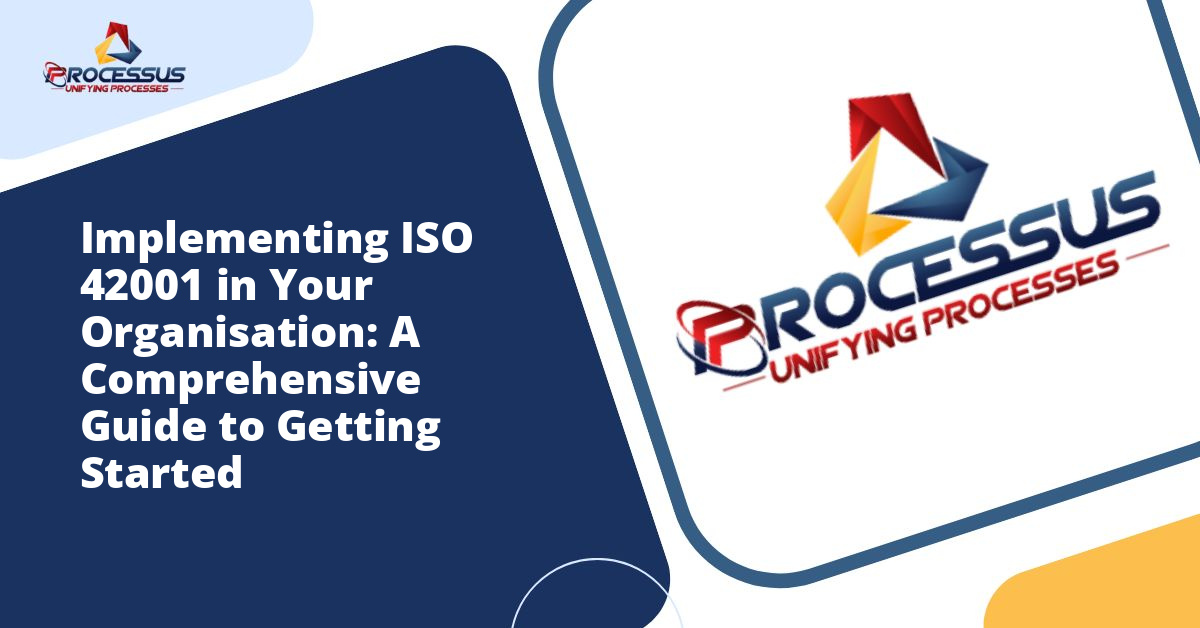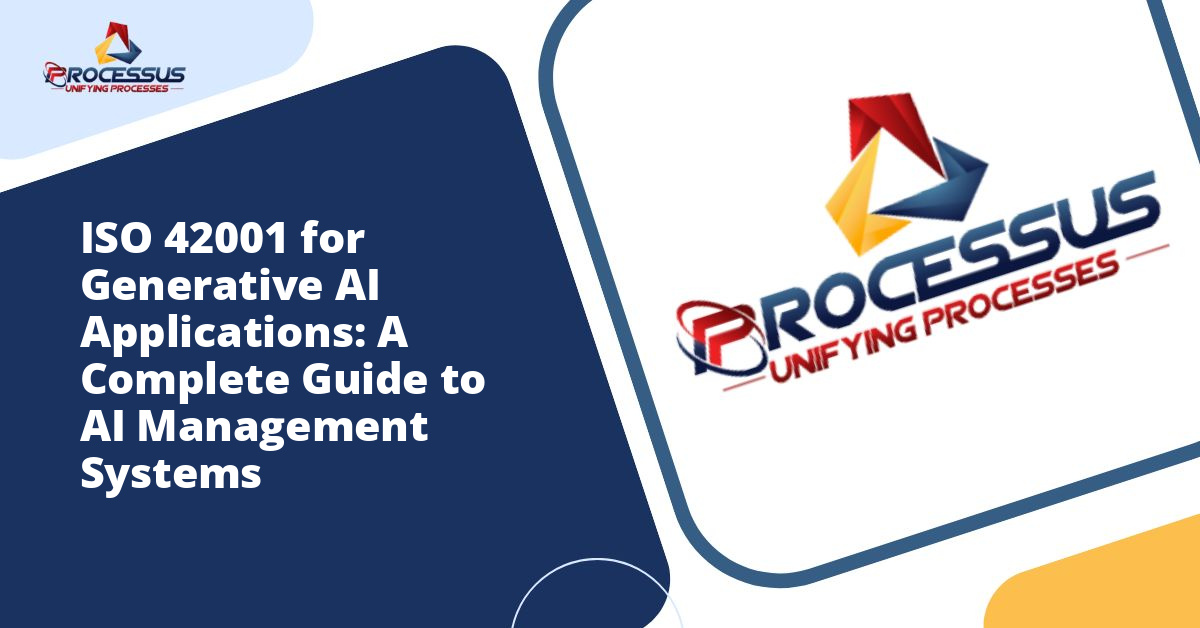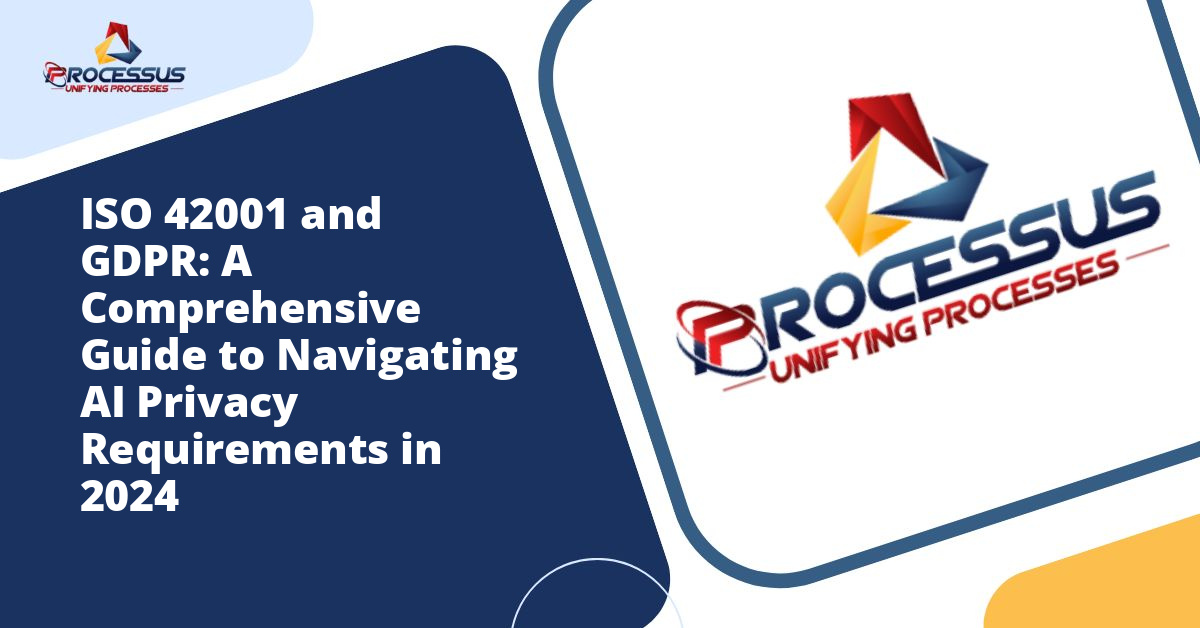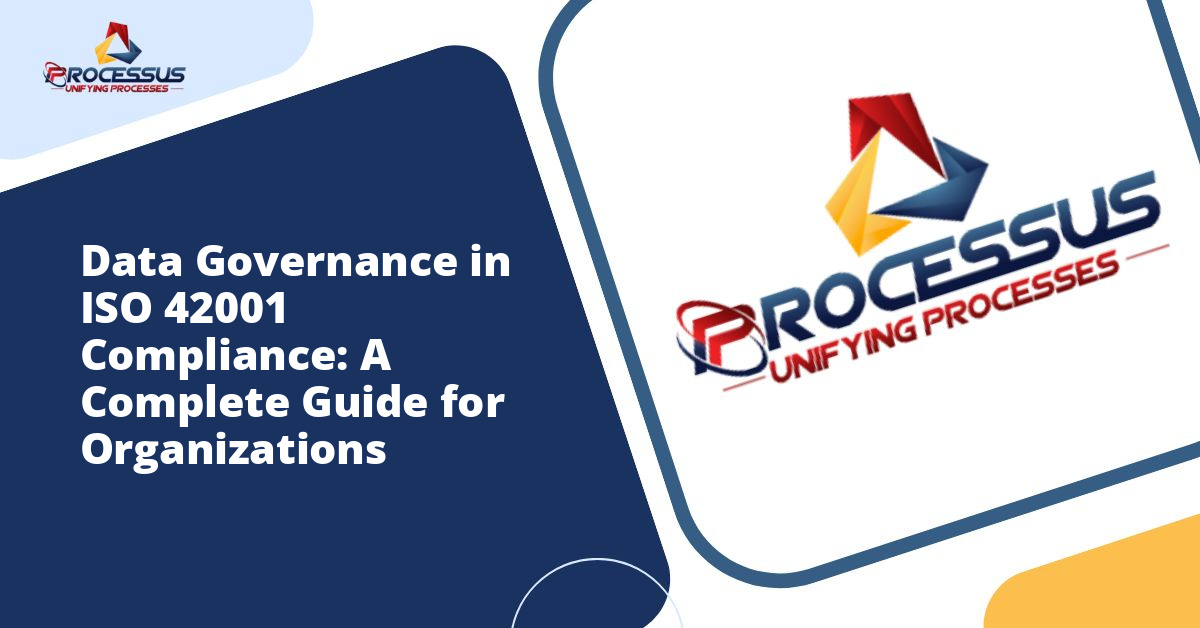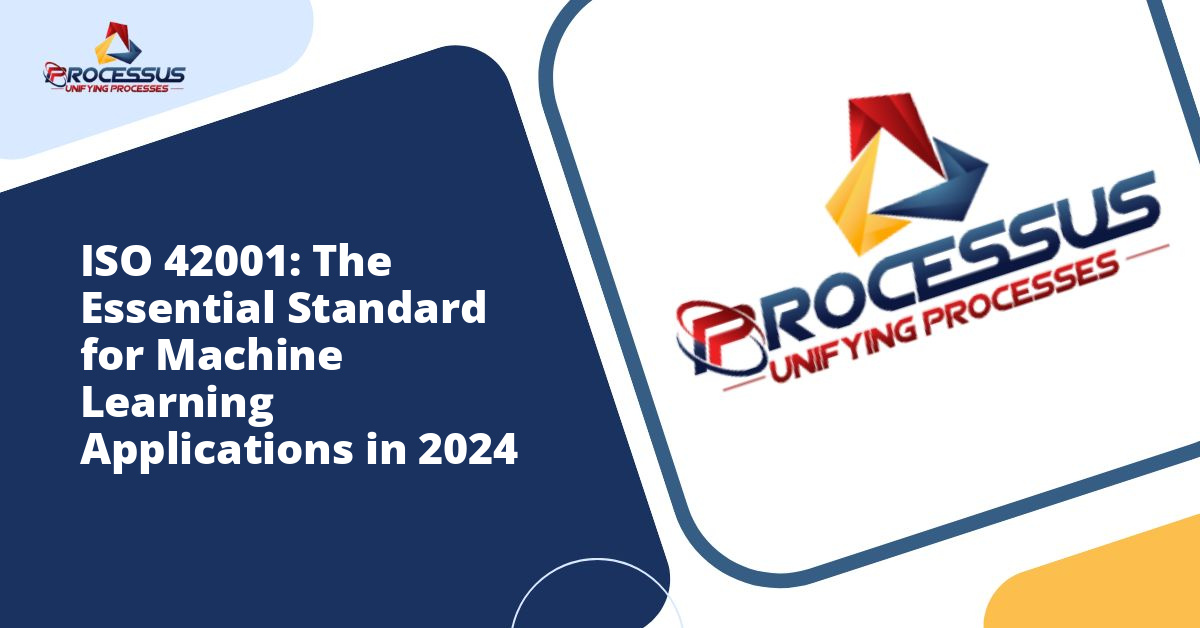The rapid advancement of artificial intelligence has created an urgent need for organizations to manage AI systems responsibly and ethically. ISO 42001, the world’s first international standard for AI management systems, provides a structured framework for organizations to develop, deploy, and oversee AI technologies in a controlled and accountable manner. This comprehensive guide will walk you through the essential steps to implement ISO 42001 in your organisation, ensuring you build a solid foundation for responsible AI governance.
Understanding ISO 42001: The Foundation of AI Management
Before embarking on the implementation journey, it is crucial to understand what ISO 42001 represents and why it matters for your organisation. Published in December 2023, ISO 42001 establishes requirements for creating, implementing, maintaining, and continuously improving an Artificial Intelligence Management System (AIMS). This standard applies to any organization that provides or uses AI-based products or services, regardless of size, type, or sector. You might also enjoy reading about ISO 42001: Understanding the World's First AI Management Standard and Its Impact on Business.
The standard addresses the unique challenges posed by AI systems, including transparency, accountability, bias mitigation, and continuous monitoring. Unlike traditional quality management systems, ISO 42001 specifically tackles the dynamic nature of AI, where systems learn and evolve over time, potentially creating unforeseen risks and ethical considerations. You might also enjoy reading about Ethical AI: How ISO 42001 Addresses Bias and Fairness in Artificial Intelligence.
Organizations that successfully implement ISO 42001 demonstrate their commitment to responsible AI practices, building trust with customers, partners, and regulatory bodies. This framework helps organizations navigate the complex landscape of AI governance while maintaining compliance with emerging regulations such as the EU AI Act and other jurisdiction-specific requirements.
Assessing Your Current AI Landscape
The first practical step in implementing ISO 42001 involves conducting a thorough assessment of your current AI landscape. This evaluation provides a baseline understanding of where your organisation stands and identifies gaps that need addressing.
Inventory Your AI Systems
Begin by creating a comprehensive inventory of all AI systems currently in use or under development within your organisation. This includes both systems you have developed internally and third-party AI solutions you have procured. For each system, document its purpose, scope, data sources, decision-making capabilities, and the business processes it supports.
Many organizations discover during this phase that they have more AI systems in operation than initially assumed. AI capabilities may be embedded within software applications, customer relationship management tools, human resources platforms, or supply chain management systems without being explicitly recognized as artificial intelligence.
Evaluate Existing Governance Structures
Examine your current governance frameworks, policies, and procedures related to technology management, data protection, and risk management. Identify which elements can be leveraged or adapted for AI governance and which areas require entirely new approaches. This assessment should include reviewing existing quality management systems such as ISO 9001, information security management systems like ISO 27001, and any industry-specific compliance frameworks already in place.
Identify Stakeholders and Champions
Successful ISO 42001 implementation requires buy-in and active participation from stakeholders across your organisation. Identify key individuals from various departments including legal, compliance, IT, data science, operations, and business units that use AI systems. Look for champions who understand both the technical aspects of AI and the strategic importance of responsible AI management.
Building Your AI Governance Framework
With a clear understanding of your current state, you can begin constructing the governance framework that will underpin your AI management system.
Establish Leadership and Accountability
ISO 42001 requires clear leadership commitment and defined accountability structures. Designate an AI governance body or committee responsible for overseeing AI initiatives and ensuring compliance with the standard. This group should include senior leadership with decision-making authority, as well as technical experts who understand AI systems.
Consider appointing an AI Ethics Officer or similar role responsible for championing responsible AI practices throughout the organisation. This individual should have the authority to raise concerns, challenge decisions, and ensure that ethical considerations remain at the forefront of AI development and deployment.
Define Your AI Policy and Objectives
Develop a comprehensive AI policy that articulates your organisation’s commitment to responsible AI management. This policy should address key principles such as transparency, fairness, accountability, privacy, and safety. It must align with your organisation’s overall mission, values, and strategic objectives while remaining specific enough to provide practical guidance.
Establish measurable objectives for your AI management system. These might include reducing bias in AI decision-making by a specific percentage, achieving a certain level of explainability for customer-facing AI systems, or ensuring all high-risk AI applications undergo rigorous testing before deployment.
Implement Risk Management Processes
Risk management sits at the heart of ISO 42001. Develop a structured approach to identifying, assessing, and mitigating AI-related risks throughout the system lifecycle. This process should consider various risk categories including technical risks, ethical risks, compliance risks, reputational risks, and operational risks.
Create a risk classification system that categorizes AI systems based on their potential impact. High-risk systems that make decisions affecting individuals’ rights, safety, or livelihood require more stringent controls than low-risk applications. Your risk management framework should be proportionate, focusing resources where they will have the greatest impact.
Developing Essential Policies and Procedures
ISO 42001 implementation requires documented policies and procedures that govern how AI systems are developed, deployed, monitored, and decommissioned.
Data Governance for AI
AI systems are fundamentally dependent on data, making robust data governance essential. Establish policies covering data collection, quality assurance, storage, access controls, and retention. Address how you will ensure training data is representative and free from bias, how you will protect sensitive information, and how you will maintain data provenance throughout the AI lifecycle.
Document procedures for data validation and verification, ensuring that data used to train and operate AI systems meets quality standards and legal requirements. Include provisions for handling personal data in compliance with privacy regulations such as GDPR or CCPA.
AI System Development and Testing
Create standardized procedures for AI system development that incorporate responsible AI principles from the outset. This should include requirements for documenting system design decisions, conducting bias assessments, implementing explainability features, and performing security testing.
Establish rigorous testing protocols that go beyond traditional software testing. AI systems require evaluation for accuracy, fairness, robustness, and reliability under various conditions. Define acceptance criteria that systems must meet before deployment, and document the testing results for future reference and audit purposes.
Monitoring and Performance Management
AI systems can drift or degrade over time as the environment in which they operate changes. Implement continuous monitoring procedures that track system performance, detect anomalies, and identify potential issues before they cause harm. Define key performance indicators specific to AI systems, such as prediction accuracy, false positive rates, fairness metrics, and user satisfaction.
Create escalation procedures for handling incidents where AI systems produce unexpected or problematic outputs. These procedures should specify who needs to be notified, how quickly issues must be addressed, and what documentation is required.
Training and Awareness Programs
Technical frameworks alone cannot ensure successful ISO 42001 implementation. Your organization needs people with the right knowledge, skills, and awareness to operate within the AI management system.
Develop Role-Specific Training
Design training programs tailored to different roles within your organisation. Data scientists and AI developers need deep technical training on responsible AI practices, bias mitigation techniques, and explainability methods. Business users of AI systems require training on appropriate use, limitations, and when to question AI-generated outputs. Executives need strategic understanding of AI risks, opportunities, and governance requirements.
Include practical scenarios and case studies that illustrate real-world AI challenges and ethical dilemmas. This helps participants understand how abstract principles apply to their daily work and decision-making.
Build Awareness Across the Organisation
Create awareness campaigns that help all employees understand the importance of responsible AI management. Use multiple channels such as town halls, newsletters, intranet articles, and team meetings to communicate key messages about your AI policy, principles, and everyone’s role in upholding them.
Encourage a culture where questioning AI decisions is welcomed and ethical concerns can be raised without fear of negative consequences. This psychological safety is essential for identifying and addressing potential issues early.
Documentation and Record Keeping
ISO 42001 requires comprehensive documentation to demonstrate that your AI management system is functioning effectively and to provide evidence for certification audits.
Create an AI System Register
Maintain a centralized register of all AI systems, documenting essential information about each system including its purpose, risk classification, data sources, performance metrics, approval status, and responsible parties. This register should be regularly updated as systems are added, modified, or retired.
Document Decision-Making Processes
Record significant decisions made throughout the AI lifecycle, including the rationale behind design choices, risk assessments, testing approaches, and deployment decisions. This documentation provides transparency and accountability while also creating valuable institutional knowledge.
Maintain Audit Trails
Implement systems that automatically log important events and changes related to AI systems. These audit trails should capture who made changes, what was changed, when changes occurred, and why they were made. This information proves invaluable during incident investigations and compliance audits.
Engaging with External Stakeholders
ISO 42001 recognizes that AI management extends beyond organizational boundaries. You need to consider relationships with suppliers, customers, regulators, and other external parties.
Supplier Management
If you use third-party AI systems or components, establish processes for evaluating and managing these suppliers. Require suppliers to provide documentation about their AI systems, including information about training data, testing procedures, known limitations, and ongoing support. Include AI-specific requirements in procurement contracts and conduct regular reviews of supplier performance.
Transparency with Users
Develop clear communication strategies for informing users when they interact with AI systems. This transparency builds trust and enables users to make informed decisions. Provide accessible explanations of how AI systems work, what data they use, and how decisions are made. Create channels for users to seek clarification, challenge decisions, or provide feedback.
Regulatory Engagement
Stay informed about evolving AI regulations in the jurisdictions where you operate. Engage proactively with regulators to understand expectations and demonstrate your commitment to responsible AI management. ISO 42001 certification can facilitate these conversations by providing evidence of robust governance practices.
Pursuing Certification
While you can implement ISO 42001 without seeking formal certification, many organizations choose to pursue certification to validate their efforts and demonstrate compliance to external stakeholders.
Selecting a Certification Body
Choose an accredited certification body with expertise in AI management systems. Research their experience, methodology, and reputation. Engage with them early to understand their specific requirements and expectations for the certification audit.
Preparing for the Audit
Certification typically involves a two-stage audit process. The first stage reviews your documentation to ensure your AI management system is properly designed and documented. The second stage assesses whether the system is effectively implemented and operating as intended.
Prepare thoroughly by conducting internal audits that simulate the certification process. Identify and address gaps before the formal audit begins. Ensure that key personnel are available to answer questions and provide evidence of implementation.
Continuous Improvement After Certification
Certification is not the end of the journey but rather a milestone in ongoing improvement. Maintain your certification through regular surveillance audits and continue enhancing your AI management system as technology evolves, new risks emerge, and your organization’s AI capabilities mature.
Overcoming Common Implementation Challenges
Organizations implementing ISO 42001 often encounter similar challenges. Anticipating these obstacles helps you prepare effective responses.
Resource Constraints
Implementing a comprehensive AI management system requires time, money, and people. Secure executive sponsorship early to ensure adequate resources are allocated. Consider a phased approach that prioritizes high-risk systems and gradually extends governance to lower-risk applications.
Resistance to Change
Some team members may view new governance requirements as bureaucratic obstacles that slow down innovation. Address this resistance by emphasizing how responsible AI management actually enables sustainable innovation by building trust, reducing risks, and preventing costly incidents. Involve skeptics in the implementation process to gain their insights and buy-in.
Technical Complexity
AI systems can be technically complex and difficult to explain to non-technical stakeholders. Bridge this gap by developing clear communication materials that translate technical concepts into business language. Create visualization tools and dashboards that make AI system behavior more transparent and understandable.
Keeping Pace with Change
AI technology evolves rapidly, and new techniques, applications, and risks continuously emerge. Build flexibility into your AI management system so it can adapt to change without requiring complete overhauls. Establish processes for regularly reviewing and updating policies, procedures, and controls.
Measuring Success and Demonstrating Value
To maintain momentum and continued support for your ISO 42001 implementation, you need to measure success and communicate the value delivered.
Define Key Performance Indicators
Establish metrics that track both the maturity of your AI management system and the business outcomes it enables. System maturity metrics might include the percentage of AI systems with documented risk assessments, the number of staff trained in responsible AI practices, or the time required to deploy new AI systems through governance processes. Business outcome metrics could include reduced AI-related incidents, improved customer trust scores, or faster regulatory approvals.
Conduct Regular Reviews
Schedule periodic management reviews where leadership evaluates the performance of the AI management system against objectives. Use these reviews to identify improvement opportunities, allocate additional resources where needed, and celebrate successes.
Communicate Results
Share progress and achievements with internal and external stakeholders. Internally, this maintains awareness and demonstrates the value of governance efforts. Externally, it builds reputation and differentiates your organization in the marketplace as a responsible AI practitioner.
Looking Ahead: The Future of AI Governance
Implementing ISO 42001 positions your organization well for the future of AI governance. As regulations tighten and stakeholder expectations increase, organizations with mature AI management systems will have significant advantages. They will be able to innovate with confidence, enter new markets more easily, and attract customers who prioritize responsible AI practices.
The investment you make today in building robust AI governance will pay dividends for years to come. While the implementation journey requires effort and commitment, the alternative of operating AI systems without proper governance carries far greater risks.
Start your ISO 42001 implementation journey today by taking the first step of assessing your current AI landscape. Build momentum through early wins, learn from challenges, and continuously improve your approach. With persistence and the right framework, your organization can harness the transformative power of AI while managing risks responsibly and building lasting trust with all your stakeholders.

